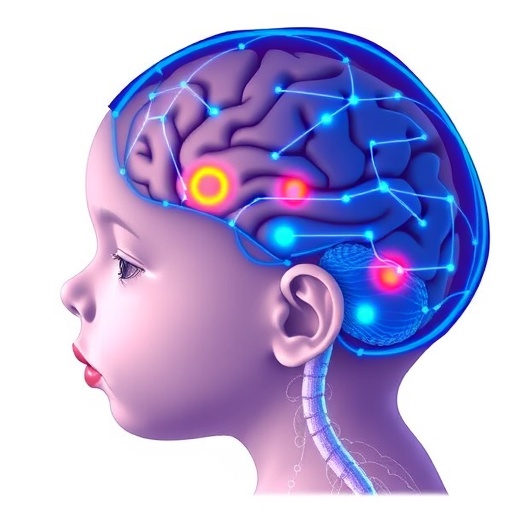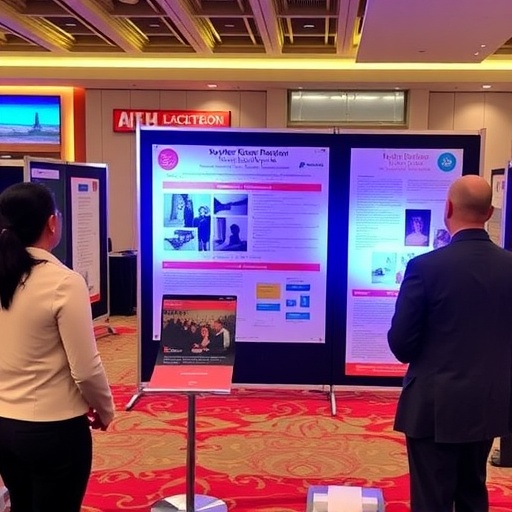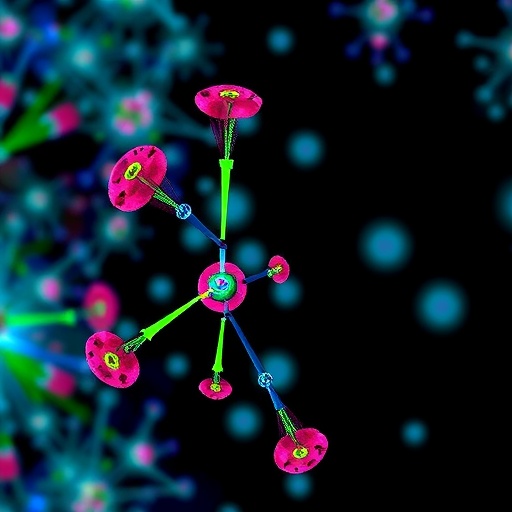In the realm of pediatric neurology, understanding the structural and functional connectivity of the brain in premature infants is more than a scientific challenge; it is a pursuit laden with implications for future developmental trajectories. A recent study conducted by Argyropoulou et al. sheds light on an often-overlooked aspect of neonatal health—non-hemorrhagic punctate white matter lesions (PWML) found in the brains of preterm infants. These lesions, typically considered benign due to their non-hemorrhagic nature, are becoming a focal point in exploring early neural connectivity and potential long-term impacts on cognitive function.
Premature infants are particularly vulnerable during their crucial developmental periods, as their brains are in a state of rapid growth and maturation. The presence of non-hemorrhagic punctate white matter lesions has raised questions about the implications for this population. Previous research has often emphasized the significance of hemorrhagic lesions, while neglecting the subtleties of PWML. This study posits that PWML might influence not only immediate neurological outcomes but also long-term cognitive and behavioral patterns.
Using advanced graph analysis techniques, the research team aimed to assess both structural and functional connectivity in the brains of these vulnerable infants. Graph theory, which applies mathematical frameworks to analyze networks, provides an invaluable lens through which to understand complex brain interactions. The findings indicate that PWML may disrupt normal brain connectivity patterns, potentially leading to deviations in cognitive capabilities and behavioral regulations later in life.
The methodology employed in this study was rigorous and innovative. The researchers utilized diffusion tensor imaging (DTI), a form of MRI that measures the diffusion of water molecules in brain tissue, allowing for the visualization of white matter integrity. Each participant’s brain connectivity was mapped out, providing a comprehensive overview of neural pathways that might be affected by PWML. The results corroborated existing theories about the fragility of neural networks in preterm infants, emphasizing the need for enhanced surveillance and intervention strategies.
Moreover, the functional connectivity assessments revealed patterns that were quite distinct when compared to term infants. These patterns suggest that the neural networks in premature infants with PWML might operate differently, which could translate into various levels of functional impairment. This disparity leads to crucial discussions surrounding early detection and intervention protocols in NICUs across the globe.
Notably, the implications of the findings extend beyond immediate clinical applications. Researchers are now calling for more extensive longitudinal studies that trace the development of these infants through childhood and adolescence. Understanding how PWML affects brain connectivity may provide critical insights into diagnosing and treating various neurodevelopmental disorders later in life. The heightened risk of conditions such as attention deficit hyperactivity disorder (ADHD) or learning disabilities could result from disrupted neural pathways formed during the earliest stages of life.
In the broader context of pediatric medicine, these discoveries could reshape approaches to neonatal care practices. For example, customized neurodevelopmental interventions might be necessary for preterm infants identified with PWML. Early therapeutic strategies, including enriched environmental exposure or targeted cognitive therapies, could ameliorate potential impacts on learning and behavior trends over time.
As the study by Argyropoulou and colleagues highlights, there remains a pressing need to prioritize early neuroimaging and assessment in NICU settings. By utilizing techniques such as DTI, healthcare professionals can identify at-risk infants and tailor interventions in a manner that supports optimal developmental outcomes. Addressing the puzzle of preterm brain health is not just about immediate neonatal care but about investing in the future well-being of individuals who were once considered fragile.
In conclusion, the emergence of research on non-hemorrhagic punctate white matter lesions is opening up a new frontier in pediatric neuroscience. The intricate relationship between structural abnormalities and cognitive outcomes emphasizes the importance of a comprehensive approach to brain health from the very first moments of life. This evolving narrative presents both challenges and opportunities for clinicians, researchers, and families alike, underlining the need for collaboration and innovative strategies in caring for our most vulnerable population.
As we move forward, it is critical not to overlook the implications of this research. The potential ramifications for developmental psychology are immense. By mapping the neural connectivity patterns in infants with PWML, scientists can begin to construct models that predict later cognitive abilities. Such models could change how we conceptualize childhood development in the context of prematurity, guiding future educational reform and resource allocation.
The study serves as a poignant reminder that advancements in technology and interdisciplinary approaches are ushering in a new era in pediatric medicine. By merging insights from neuroimaging, developmental psychology, and clinical practice, we can better understand the complexities of brain health in our youngest citizens. Continued focus on the long-term impacts of early neurological conditions provides a pathway not just for improved outcomes but for nurturing a generation capable of overcoming early adversity.
In summary, the research findings regarding structural and functional connectivity in premature infants with non-hemorrhagic punctate white matter lesions lay the groundwork for an exciting journey of exploration in pediatric neuroscience. There is an urgency for further investigations, enhancing our comprehension of how early neurological disruptions can shape a lifetime of learning, emotional regulation, and social interaction. Such work will undoubtedly pave the way for novel interventions that can foster resilience and optimize potential for children affected by prematurity.
Subject of Research: Structural and functional connectivity of the brain in premature infants with non-hemorrhagic punctate white matter lesions.
Article Title: Structural and functional connectivity of the brain in premature infants with non-hemorrhagic punctate white matter lesions: a graph analysis.
Article References:
Argyropoulou, M.I., Margariti, P., Xydis, V. et al. Structural and functional connectivity of the brain in premature infants with non-hemorrhagic punctate white matter lesions: a graph analysis. Pediatr Radiol (2025). https://doi.org/10.1007/s00247-025-06422-z
Image Credits: AI Generated
DOI: https://doi.org/10.1007/s00247-025-06422-z
Keywords: Premature infants, white matter lesions, brain connectivity, neuroimaging, cognitive development, pediatric neuroscience.
Tags: advanced graph analysis techniquesbrain connectivity in premature infantsimplications of white matter lesionsLong-term Cognitive Outcomesneonatal health implicationsneurological outcomes in premature infantsnon-hemorrhagic punctate white matter lesionspediatric neurology researchpreterm infant brain developmentPWML and cognitive functionstructural and functional connectivityunderstanding brain networks in infants





